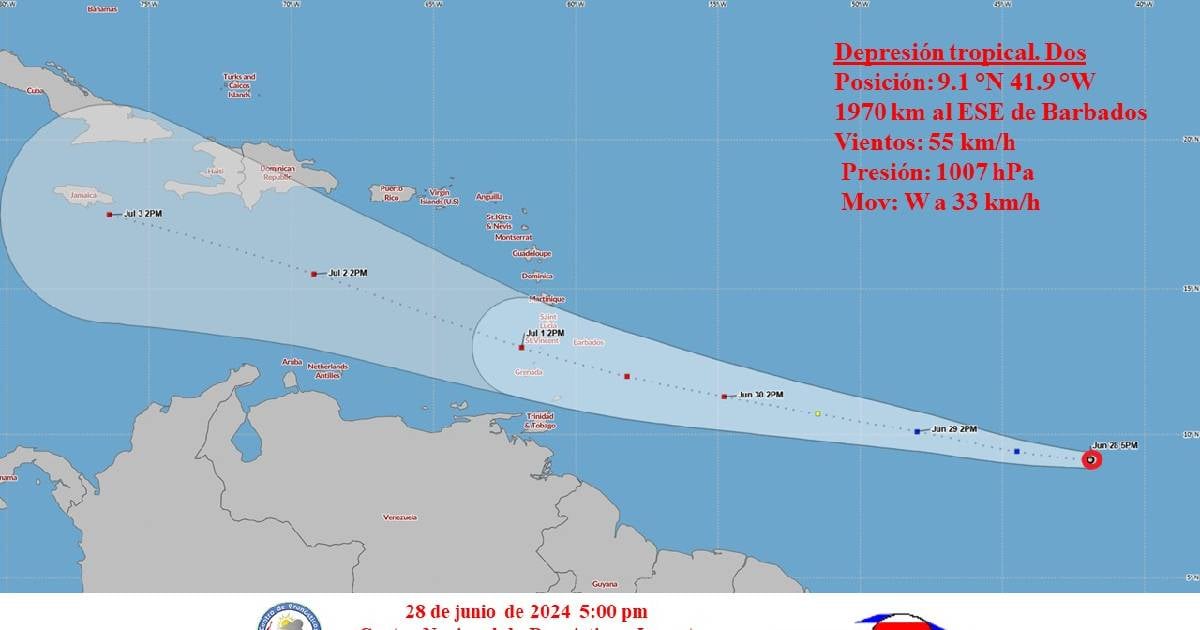
An area of low pressure located in the Atlantic Ocean became Tropical Depression Two of this season on Friday and threatens to become a hurricane near Cuba.
This system has maximum sustained winds of 55 kilometers per hour, with higher gusts, and a central minimum pressure of 1007 hectoPascals, reported the Cuban Meteorological Institute (Insmet).
According to a late report, at five in the afternoon the center of the depression was located at 9.1 degrees latitude North and 41.9 degrees longitude West, positioning itself about 1970 kilometers to the east-southeast of Barbados, the easternmost island of the Lesser Antilles arc. The depression is moving westward at a speed of 33 kilometers per hour.
It is expected that in the next 12 to 24 hours, Tropical Depression Two will continue moving towards the west-northwest, gaining in organization and intensity.
It is likely to become Tropical Storm Beryl tonight or tomorrow Saturday, and a hurricane on Sunday, before reaching the Lesser Antilles arc, the eastern boundary of the Caribbean Sea, where it would arrive as a Category 2 or 3.
Given its evolution and future trajectory, there is close monitoring of this tropical cyclone. It is expected that the system will strengthen and become a hurricane when it reaches the Windward Islands late Sunday or Monday. Hurricane and tropical storm alerts are likely to be issued for parts of the Windward Islands and southern Leeward Islands later tonight or on Saturday, the note states.
The next advisory about this system will be issued in Cuba at six o'clock in the afternoon on Saturday; but the National Hurricane Center (NHC) of the United States said that meteorological updates would be provided in the region to keep the population informed.
That entity based in Miami reported hours earlier that the tropical wave located about 1,400 miles east-southeast of the Windward Islands had a 100% chance of becoming a hurricane in the coming days.
American and Cuban meteorologists have predicted that the current hurricane season will be the most active in the last 40 years.
What do you think?
COMMENTFiled in: